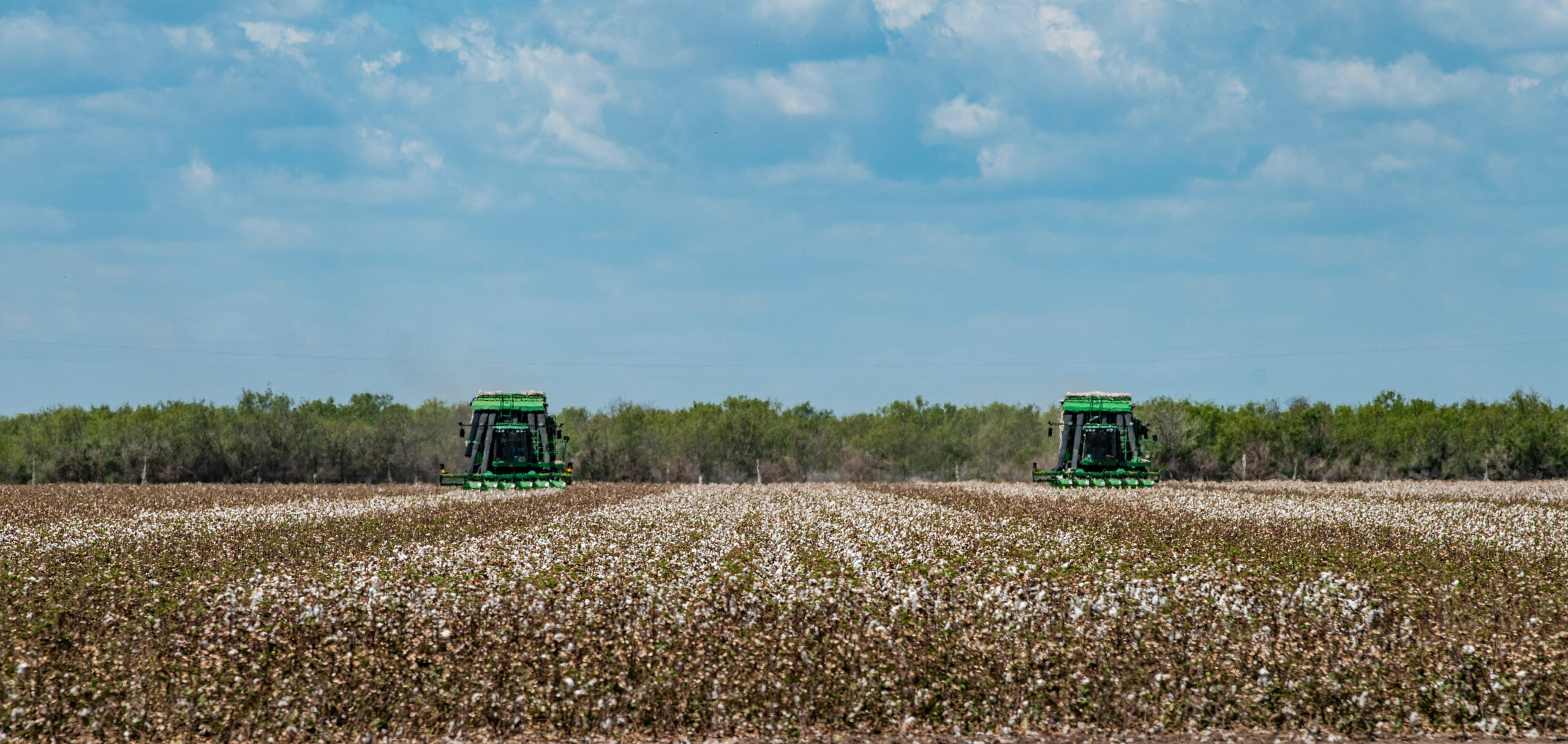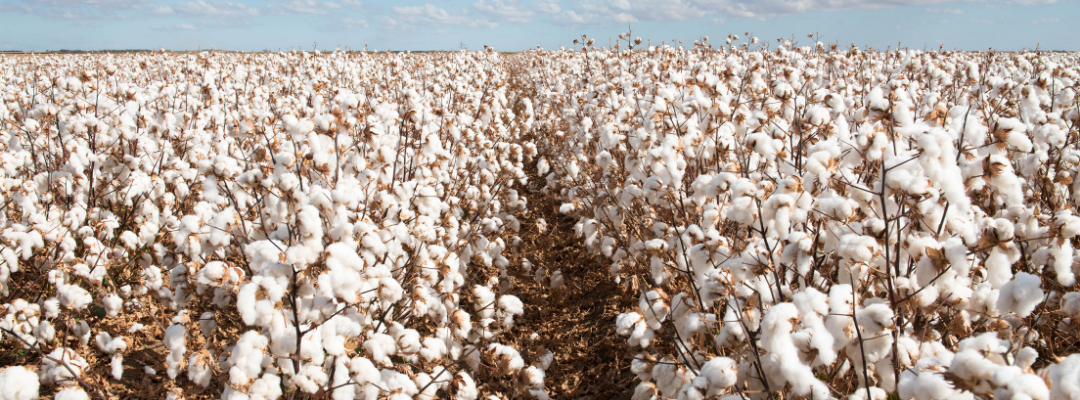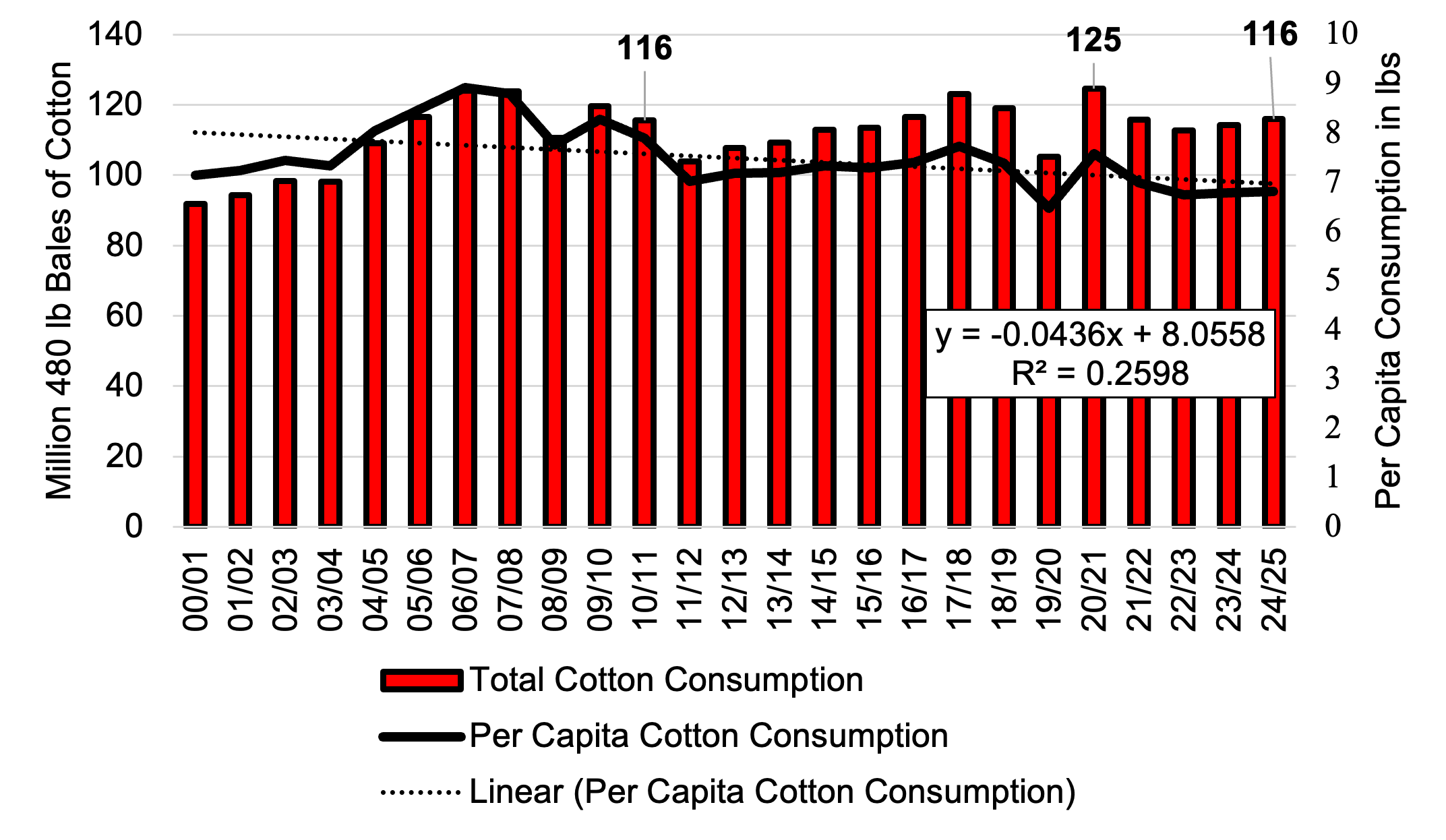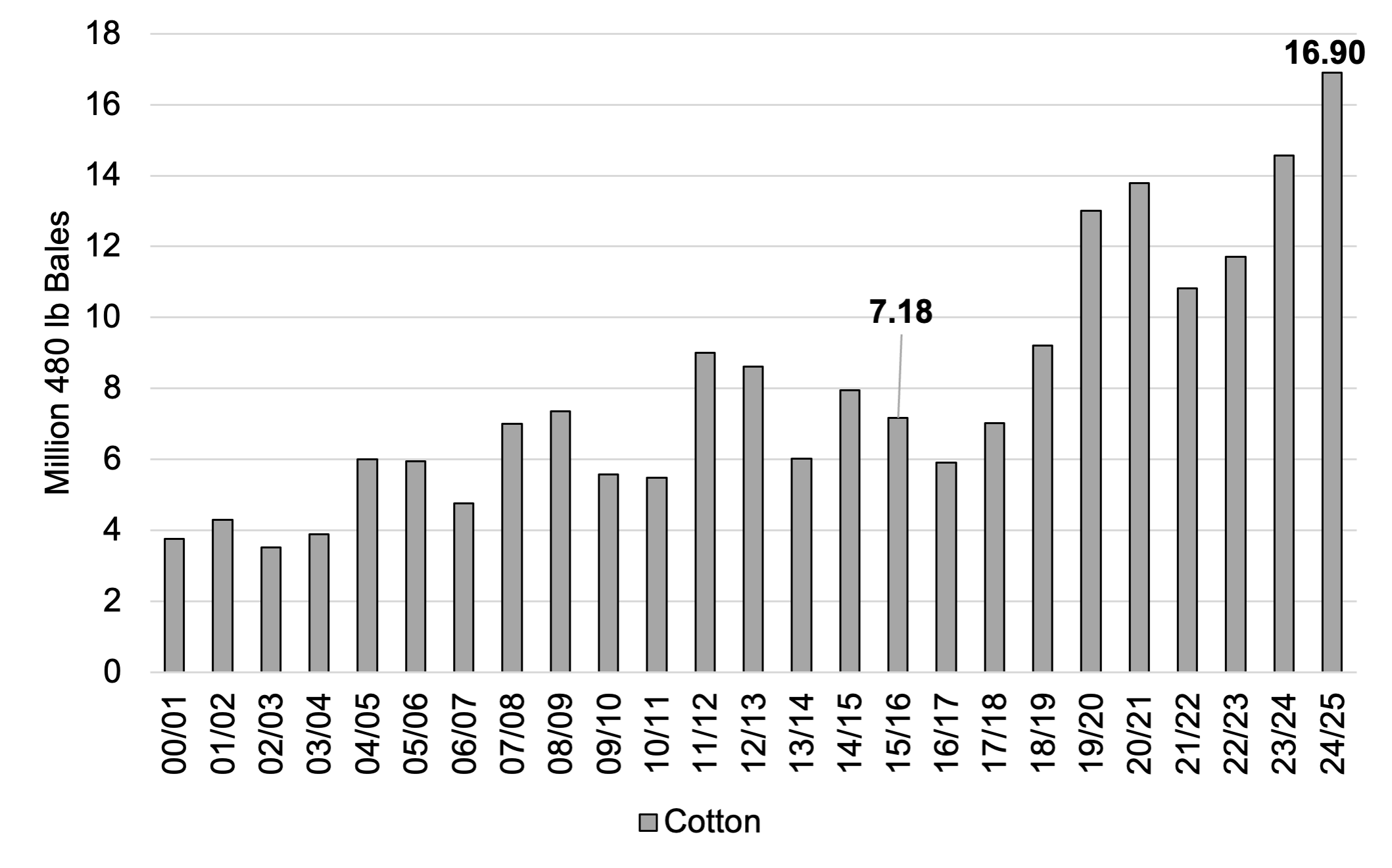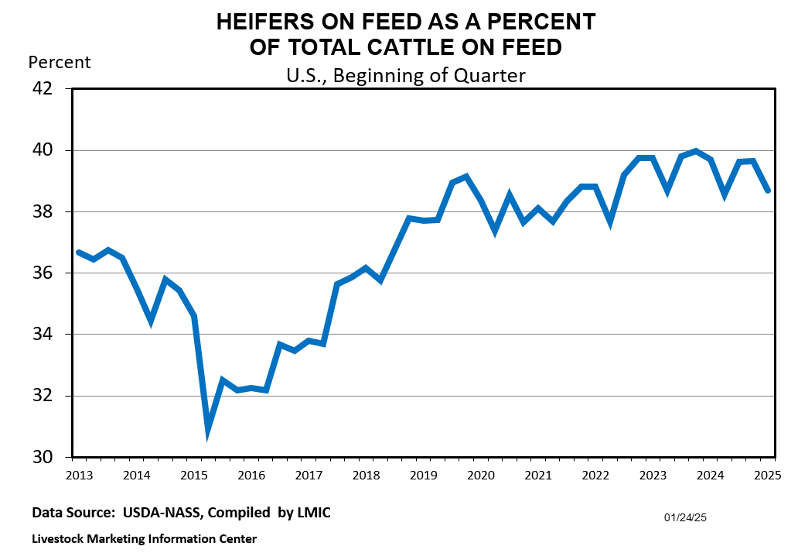Over the last few years, producers have been challenged to balance decreasing commodity prices against high input costs. One of the major factors contributing to this challenge has been above-average fertilizer prices. In 2021 and 2022, a combination of increased demand for fertilizer and disruptions to fertilizer production and supply caused prices to double or, in the case of anhydrous ammonia (NH3), triple in a few months (Figure 1), reaching record highs. The good news is that nominal fertilizer prices decreased throughout 2023 and 2024 as these shocks were largely corrected. In the first half of 2023, prices decreased by 20%-40%, depending on the product, from their 2022 highs. Prices largely declined in 2024 until the last quarter of the year. Since then, prices for most fertilizer products have either remained stable or increased.
Of course, the cost of fertilizer depends not only on the price of fertilizer but also on the price of the commodity the fertilizer is used to grow. It’s much easier for producers to purchase fertilizer when they can sell corn for $7/bushel, as opposed to $4/bushel, regardless of the nominal fertilizer price. Figures 2 and 3 illustrate the price of urea relative to corn and cotton prices for the years 2020-2024. Fertilizer prices used to calculate these ratios come from DTN Progressive Farmer’s weekly average fertilizer price updates. Cotton and corn prices use the weekly closing price for the nearby December contract as reported in Texas A&M AgriLife Extension Economics Basis Data and by Barchart.com.
Figure 2 illustrates the total bushels of corn required to purchase one ton of urea in each month of the series. Figure 3 shows the total pounds of cotton lint required to purchase one ton of urea each month. From January 2020 until August 2021, producers needed an average of 98.02 bushels of corn or 577.80 pounds of cotton lint to purchase 1 ton of urea. From September 2021 through December 2022, when fertilizer prices reached their highest levels, one ton of urea cost an average of 135.72 bushels of corn or 836.61 pounds of cotton lint. From January 2023 through December 2024, as fertilizer prices fell, one ton of urea was worth 117.40 bushels of corn or 719.26 pounds of cotton lint on average.
Now, what about relative fertilizer prices in 2025? For the week of January 13-17, DTN Progressive Farmer reported an average price of $492/ton of urea. During that same week, the average price for the Dec ’25 corn contract was $4.56/bushel, and the average price for the Dec ’25 cotton contract was $0.69/pound, according to Barchart.com. This gives us a urea-corn price ratio of 107.92 bushels/ton and a urea-cotton ratio of 711.25 pounds/ton. To put these values into perspective, this urea-corn ratio is similar to the June 2020 ratio and about 0.83 bushels/ton less than in January 2024. The urea-cotton ratio, on the other hand, is about 52.32 pounds/ton higher than in January 2024, and similar to June and July of last year.
Currently, fertilizer is slightly cheaper relative to corn prices and slightly more expensive relative to cotton prices when compared to a year ago. Looking forward, nominal fertilizer prices have been mostly stable since July of last year. Should this trend continue, changes in relative fertilizer prices this year will depend on how farm commodity prices change.
Figure 1. Weekly Retail Prices for Selected Fertilizer Products, 2020-2024
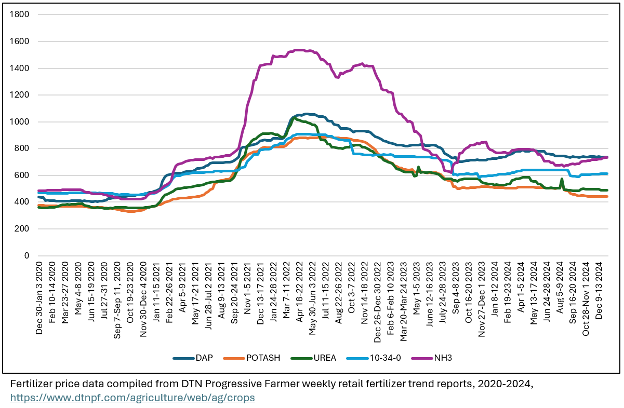
Figure 2. Monthly Urea-Corn Price Ratio, 2020-2024

Figure 3. Monthly Urea-Cotton Price Ratio, 2020-2024
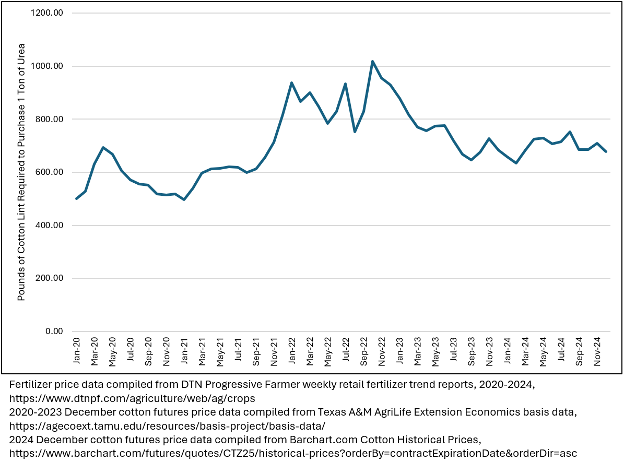
Sources:
Corn Historical Prices. Barchart.com, https://www.barchart.com/futures/quotes/ZCZ25/historical-prices?orderBy=contractExpirationDate&orderDir=asc.
Cotton #2 Historical Prices. Barchart.com, https://www.barchart.com/futures/quotes/CTZ25/historical-prices?orderBy=contractExpirationDate&orderDir=asc.
DTN Retail Fertilizer Trends. DTN Progressive Farmer, https://www.dtnpf.com/agriculture/web/ag/crops.
Texas A&M AgriLife Extension Agricultural Economics Basis Data, https://agecoext.tamu.edu/resources/basis-project/basis-data.
Wright, Andrew. “Fertilizer Prices: What Can We Expect in 2025?” Southern Ag Today 5(6.1). February 3, 2025. Permalink


